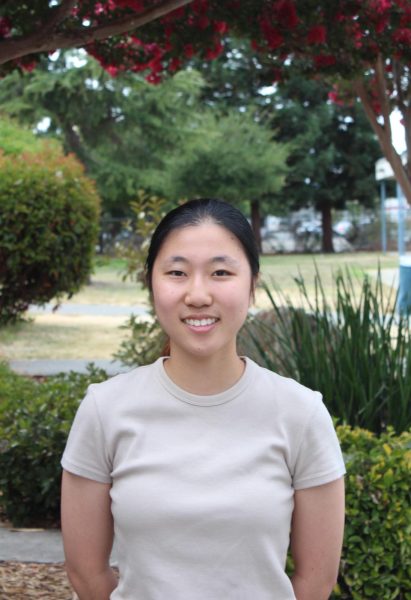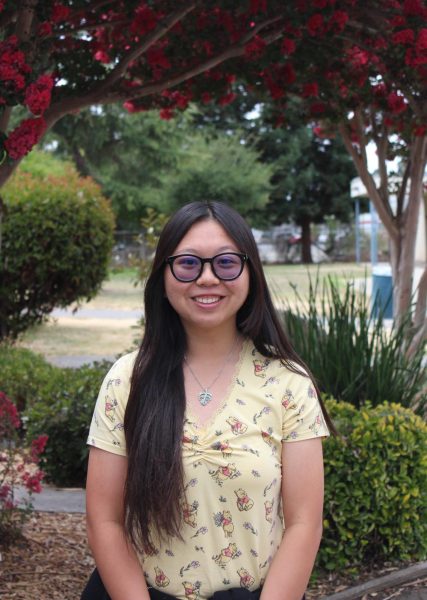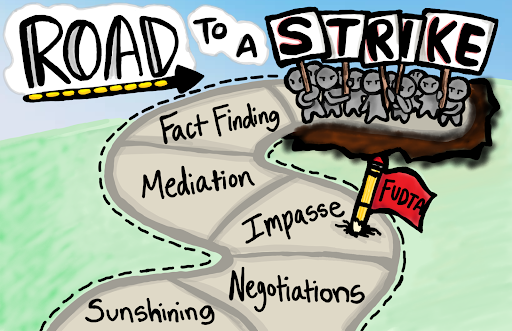Since January of this year, the Fremont Unified District Teachers Association (FUDTA) and the Fremont Unified School District (FUSD) have held 22 negotiation sessions aimed to reach a successor agreement, which would update current terms of employment for teachers, counselors, nurses, and other staff. The previous contract expired on June 30th, and both sides are negotiating to create a new three-year agreement. Amongst key negotiation issues are lowering class sizes, increasing support for special education programs, and providing healthcare coverage for staff.
One of FUDTA’s most significant issues is healthcare coverage. Unlike many public school districts in the US, teachers and staff in the Fremont Unified School District do not receive any medical coverage as a part of their employment. In the 1990s, when healthcare was still relatively affordable, healthcare coverage was bargained out and incorporated into increased teacher salaries. Since then, accessing private healthcare insurance has become significantly more difficult and increases in teacher salaries have lagged far behind rising medical costs and inflation. This, coupled with Fremont’s high cost of living, has led some teachers to move outside the Bay Area — either finding employment elsewhere or commuting many hours.
Another major point of negotiation is reducing class sizes, particularly in elementary schools. FUDTA is advocating for a cap of 24 students per class in kindergarten through second grade, and 26 in third through fifth. For secondary education, the union is requesting a maximum of 31 students in core classes such as English and Math and pushing a hard limit of 10 -12 students in special needs classes. FUDTA would also like to see a decrease in counselor-to-student ratios down to 1:250, in addition to an increase in the number of nurses and speech pathologists.
FUSD has raised concerns about the financial feasibility of these requests. With the district already facing 30 million dollars in budget cuts, representatives stressed the importance of remaining fiscally solvent. “The District agrees with FUDTA in most cases that things like lower class sizes, improved student to specialist ratios, full benefits, ongoing salary increases, and more are great ideas. Those things help us attract and keep staff,” explained Assistant Superintendent Zack Larson. “The District does not say no just to say no. We have to carefully consider the costs of the requests and the District is not able to take on new and ongoing costs at this time. We, like nearly all districts in California, do not receive full and fair funding from the state or the Federal government.”
There has been progress, however, in areas where the District can accommodate FUDTA’s requests. For example, FUSD has made a proposal to increase the stipends provided to school coaches/advisors and to increase the number of guaranteed full-time nursing positions. For the first time since 1997, the district has proposed paying for employees’ dental premiums, resulting in more take home pay for staff. Additionally, using remaining one-time funds, FUSD has proposed a one-time, off-schedule payment of 3.5% to employees with a commitment to return to negotiations next year. The district acknowledges that an ongoing raise is more desirable but does not find it to be financially feasible at this time.
There is a very specific set of steps unions must follow in the bargaining process, prior to going on strike. It begins with the sunshine phase, where initial proposals from both sides are presented at a school board meeting. The purpose of this step is to maintain transparency and to keep the public informed about the issues being negotiated. There are 43 articles in the contract detailing working conditions, and both the union and the district decide which of these they want to reopen for discussion. Currently, FUDTA has provided fifteen proposals, one for each article opened, and FUSD has provided two.
Following this, the groups enter negotiations. Over the past 10 months, tentative agreements have been reached on a few issues including increased nursing positions. Bargaining will continue until no further agreements can be reached, at which point one side may declare impasse.
After an impasse is declared, it must be reviewed by the Public Employment Relations Board (PERB). Once confirmed, a third-party mediator will be brought in to facilitate discussions and to attempt to get the parties to reach a compromise. If mediation is unsuccessful, a fact-finding panel is formed, usually consisting of one member from each party and a labor relations specialist. This panel will come up with recommendations that the parties can either accept or reject.
If all previous steps fail, the union may decide to strike. However, as Victoria Chon, the president of the teachers’ association, has stated, “Strikes are hard for everybody. It’s a disruption and it causes challenges. Going on strike is not an easy decision and it’s never something we would take lightly.” How fast this process moves varies between situations. Currently, negotiations are still ongoing and FUDTA has not announced any plans to begin another work-to-rule campaign or to start a strike. More information regarding the recent negotiations will be posted on the following website: https://fremontunified.org/news/negotiations-update-fusd-fudta-2024/.















